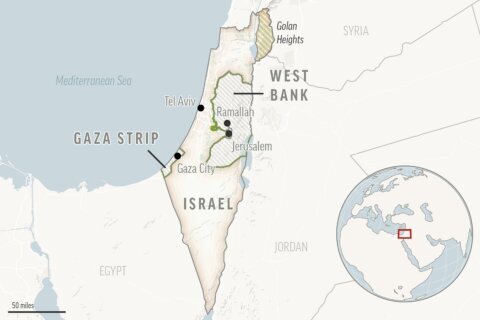Zika virus is one of many mosquito-borne diseases, including malaria, yellow fever and dengue, that can cause human illness. Dengue, for example, accounts for 25,000 deaths per year. But mosquito-borne diseases don’t necessarily have to interfere with your plans to retire overseas. Zika seems to be spreading across the globe, everywhere but up. You can escape Zika (and all mosquito-borne diseases) by living at an altitude higher than 6,500 feet.
In the Americas there are many good options for living at this altitude, from Colombia to Chile. If you choose a high-altitude retirement haven near the equator, you’ll realize an added bonus of constant spring-like temperatures with little seasonal variation. This means comfortable living all year long. It also means you’ll save on heat and air conditioning costs.
There are many excellent choices for life above the Zika line. Here are three expat havens at altitudes of more than 6,500 feet, all offering gentle weather and screen-free living:
[See: 10 Retirement Spots With Year-Round Nice Weather.]
Bogotá, Colombia. This world capital has quality and diverse living options. Bogotá is clean, safe, cheerful, full of energy and a great venue for city living. Some of Bogotá’s sectors qualify as among the best in Latin America for a cosmopolitan retirement lifestyle.
Bogotá sits in the Colombian Andes on a high mountain-rimmed plateau, at an elevation of about 8,650 feet. Its 8 million residents enjoy spring-like weather every month of the year, with highs around 70 degrees and lows in the 50s. The seasonal temperature variation is less than one degree.
The city offers a wide selection of living options. You could enjoy the fine dining and cafés of upscale sectors such as El Chicó and Rosales, or live in the heart of the action, enjoying the lively and energetic Latino feel in El Nogal or Chapinero (while spending a bit less money).
By Colombian standards, the cost of living and of real estate is relatively high in Bogotá. However, by international standards the cost both of living and buying property in this city is a bargain, especially when you consider that this is a world capital city. You could own a luxury-standard two-bedroom penthouse apartment for about $250,000 at the current rate of exchange between the U.S. dollar and the Colombian peso.
Living here, zika, yellow fever and malaria would be faraway concepts and things that exist at much lower elevations.
Arequipa, Peru. This sparkling city is showered in the strong Andean sunshine. Arequipa, with its beautifully restored and maintained historic center, is Peru’s second-largest city and third-largest tourist destination. It was named a UNESCO World Heritage Site in 2000.
Arequipa is known as the Ciudad Blanca, or “White City,” because many of its structures are made of sillar, a white stone block made from volcanic rock found in the area. The effect of all this white is dazzling in the sunshine. The architecture has a strong Moorish influence. Construction quality is good here compared with what you typically find in Spanish-colonial cities, which are usually built of adobe, made from earth.
[See: 10 Retirement Hot Spots in the U.S.]
Arequipa sits at an altitude of 7,600 feet, well out of the mosquito danger zone. The rainy season here is from January to March, but it rains very little, about half as much as the deserts around Phoenix. The average daily high temperature is about 71 degrees, while the average low is around 44 degrees, with almost no seasonal variation.
The most appealing lifestyle here would be in the historic center. You might want to avoid the blocks immediately around the main square, due to the heavy tourist traffic. A few blocks off the square, you could buy a large colonial-style hacienda for less than $200,000 at the current rate of exchange between the U.S. dollar and the Peruvian sol. Other good retirement lifestyle choices include residential areas outside the historic center, such as the Cayma district.
Puebla, Mexico. This Mexican colonial city is an unsung top choice among the many appealing retire overseas options in Mexico. Puebla is one of the most impressive Spanish-colonial environments you’ll find in the Americas. This is a real city, not one that caters to tourists. It’s a town of around 2.5 million people that manages to feel like a small community in many ways.
Among international travelers, Puebla is noted for its famous Talavera pottery and its mole poblano, a thick, dark sauce made from toasted ground chili peppers, spices, chocolate and about 25 other ingredients.
The zócalo (town square) is one of the best in Mexico. It’s an entire city block lined with sidewalk cafés and shops hidden behind the classic portales (arches) common to Spanish-colonial squares. The sheer size of Puebla’s historic center, as well as its state of preservation, make it unusual in Spanish America and led to Puebla’s designation as a UNESCO World Heritage Site in 1987. The downtown area includes more than 1,000 colonial buildings. The cathedral is magnificent, and it’s but one of more than 70 beautiful churches in the historic center.
Puebla sits at an altitude of about 7,000 feet, well out of the mosquito range. The average high temperature is 77 degrees, with a seasonal variation of about plus or minus 5 degrees. Overnight lows average 49 degrees. For many retirees, this weather is perfect.
There are few American retirees in Puebla. The lack of a large American or Canadian expat community will be a positive for some retirees and a negative for others, but it does create the feeling that you’re in traditional old Mexico.
[See: 50 Affordable Places to Buy a Retirement Home in 2016.]
Property prices here are surprisingly low, even near the zócalo and main cathedral. This is partly because, unlike in better-known tourist and expat retiree haunts, homes in Puebla are priced in pesos. This gives dollar holders a tremendous advantage at today’s exchange rate. You could buy a large home for less than $100,000.
Kathleen Peddicord is the founder of the Live and Invest Overseas publishing group.
More from U.S. News
How Much You Need to Buy a Retirement Home in 10 Cities
10 Affordable Places to Retire Overseas in 2016
3 Options for a Mosquito-Free Retirement Overseas originally appeared on usnews.com







